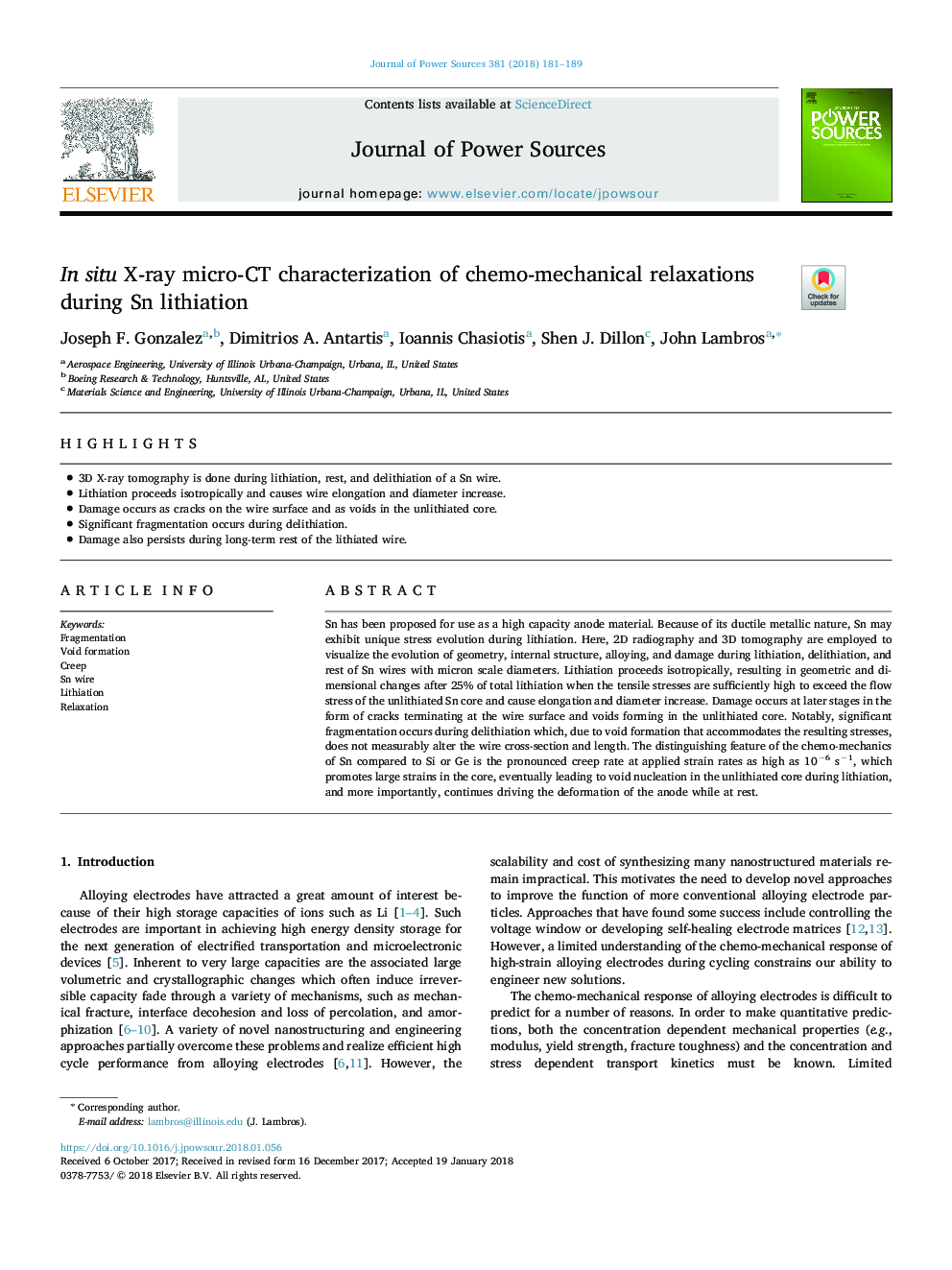| Article ID | Journal | Published Year | Pages | File Type |
|---|---|---|---|---|
| 7725565 | Journal of Power Sources | 2018 | 9 Pages |
Abstract
Sn has been proposed for use as a high capacity anode material. Because of its ductile metallic nature, Sn may exhibit unique stress evolution during lithiation. Here, 2D radiography and 3D tomography are employed to visualize the evolution of geometry, internal structure, alloying, and damage during lithiation, delithiation, and rest of Sn wires with micron scale diameters. Lithiation proceeds isotropically, resulting in geometric and dimensional changes after 25% of total lithiation when the tensile stresses are sufficiently high to exceed the flow stress of the unlithiated Sn core and cause elongation and diameter increase. Damage occurs at later stages in the form of cracks terminating at the wire surface and voids forming in the unlithiated core. Notably, significant fragmentation occurs during delithiation which, due to void formation that accommodates the resulting stresses, does not measurably alter the wire cross-section and length. The distinguishing feature of the chemo-mechanics of Sn compared to Si or Ge is the pronounced creep rate at applied strain rates as high as 10â6 sâ1, which promotes large strains in the core, eventually leading to void nucleation in the unlithiated core during lithiation, and more importantly, continues driving the deformation of the anode while at rest.
Related Topics
Physical Sciences and Engineering
Chemistry
Electrochemistry
Authors
Joseph F. Gonzalez, Dimitrios A. Antartis, Ioannis Chasiotis, Shen J. Dillon, John Lambros,
